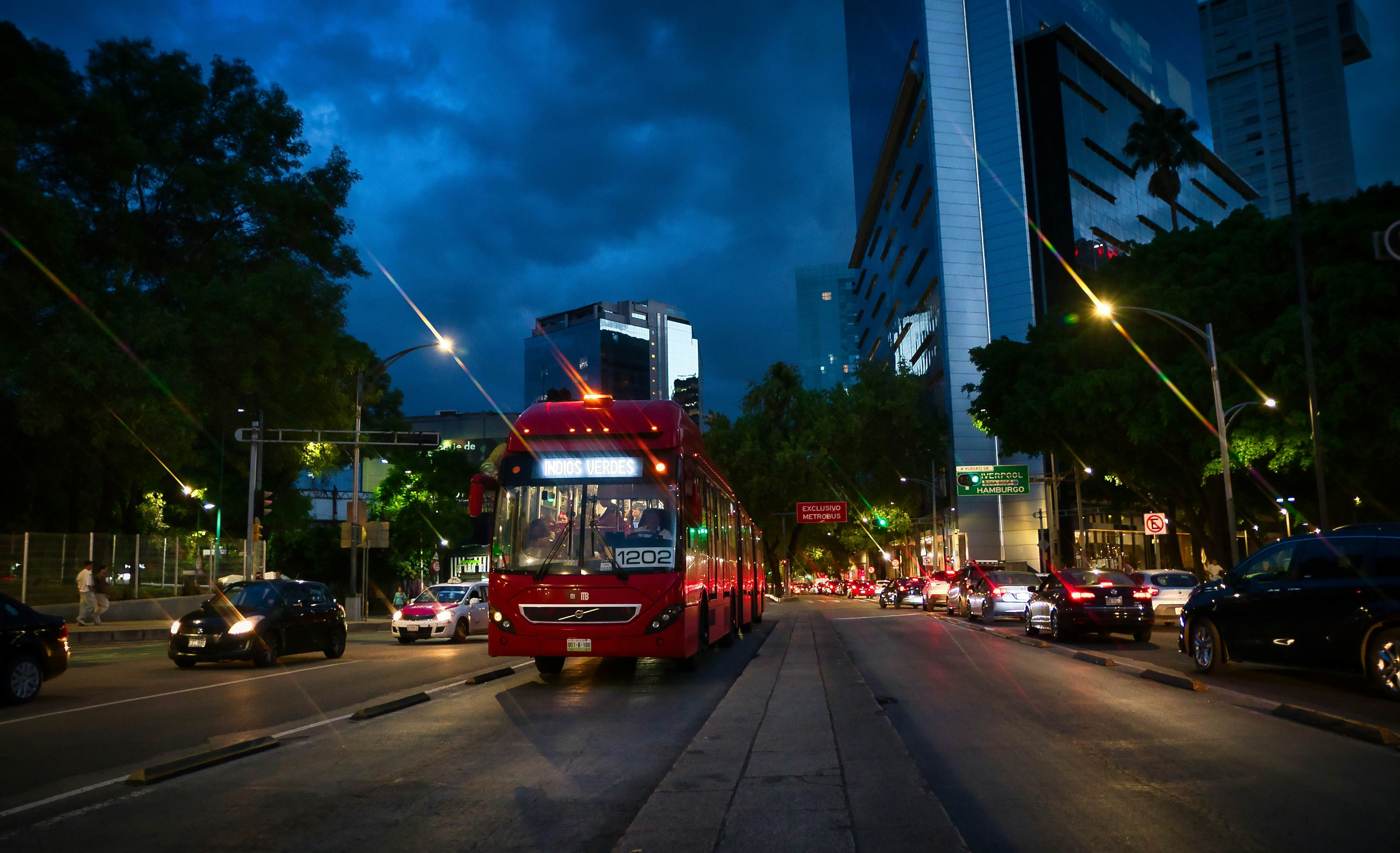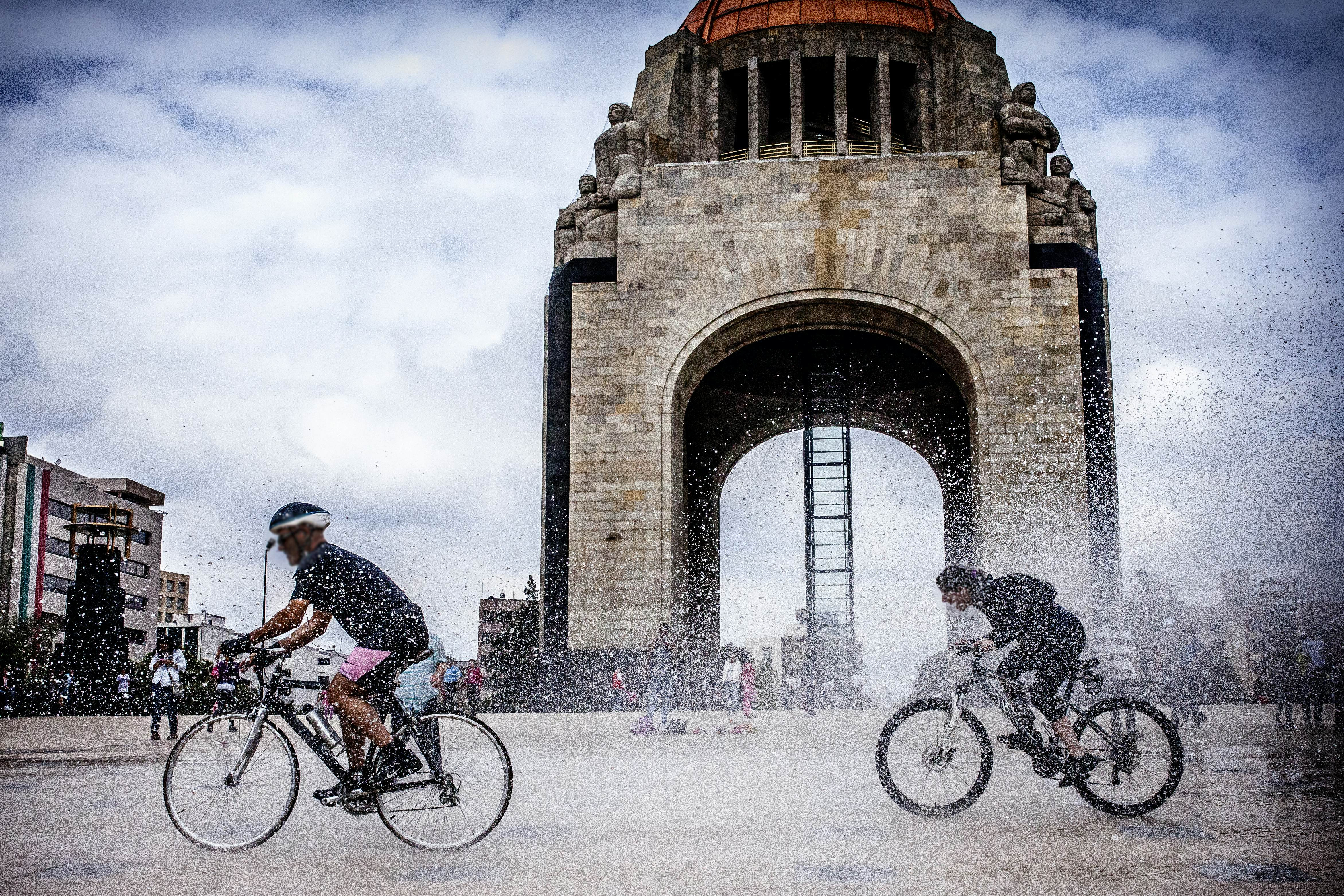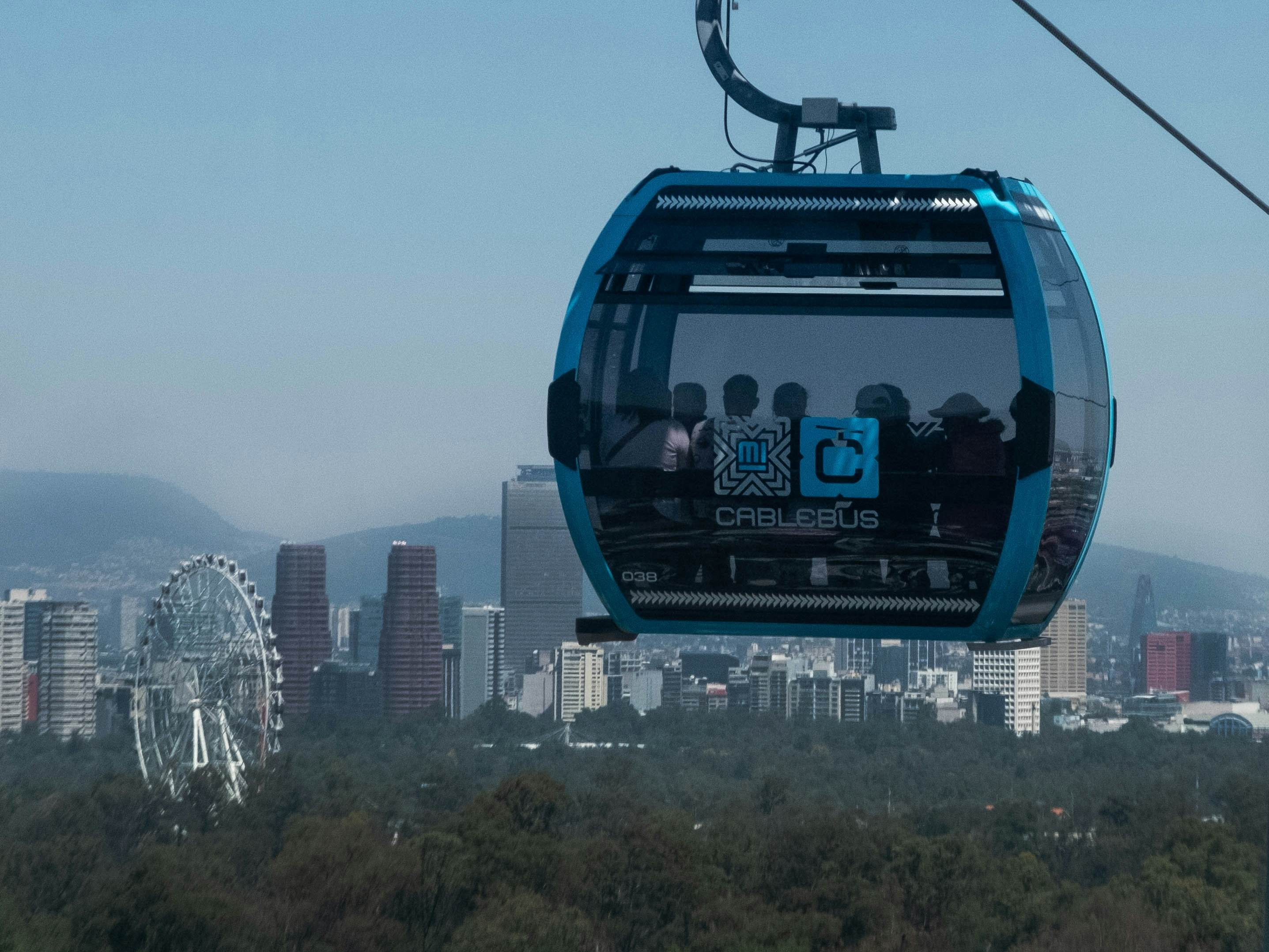Navigating Mexico City can be an exciting adventure, and at gaymexico.net, we’re here to help you do it with ease and confidence, especially for LGBTQ+ travelers. This guide offers practical tips and resources for exploring this vibrant metropolis, ensuring you experience the best of Mexico City’s gay-friendly environment. Discover accessible transportation options, insider tips, and resources to make your journey seamless, safe, and unforgettable with our travel advice and queer travel tips.
1. Understanding Mexico City’s Transportation Landscape
Mexico City, a sprawling metropolis with over 20 million residents, presents a unique set of transportation challenges and opportunities. Knowing how to navigate this urban landscape is crucial for a smooth and enjoyable visit, especially for LGBTQ+ travelers seeking safe and convenient options. Let’s explore the various ways to get around, from the efficient Metro system to LGBTQ+ friendly rideshare services.
1.1. Integrated Transit Card: Your Key to the City
The Tarjeta de Movilidad Integrada (Integrated Transit Card) is essential for navigating Mexico City’s public transportation. This prepaid card allows you to access the subway, buses, cable cars, and even bike-sharing services with a single account.
1.1.1. How to Obtain and Use the Card
You can purchase the Integrated Transit Card at ticket offices or machines in any Metro or Metrobús station for approximately M$15 (US$0.75). After purchasing the card, you can easily top it up as needed. This card streamlines your travel experience and saves you time by eliminating the need to purchase individual tickets for each ride.
1.2. The Metro: Affordable and Efficient
Mexico City’s Metro system is one of the most affordable and efficient ways to travel around the city. With 12 lines and 195 stations, it connects key areas and landmarks, making it a popular choice for both locals and tourists.
 A platform of the Mexico City metro with an orange train waiting to depart on the track
A platform of the Mexico City metro with an orange train waiting to depart on the track
1.2.1. Navigating the Metro System
The Metro system is color-coded, making it easy to navigate. However, it can get crowded during peak hours (7:00 AM to 9:30 AM and 5:00 PM to 7:30 PM). To avoid the crowds, consider traveling during off-peak times.
1.2.2. Unique Metro Experiences
Many Metro stations offer more than just transportation. Stations like Hidalgo and Bellas Artes feature murals and art galleries, while Zapata has a cinema, and Pino Suárez even houses an Aztec temple. These unique attractions make the Metro a cultural experience in itself.
1.2.3. Metro Tips for LGBTQ+ Travelers
- Be aware of your surroundings, especially during peak hours, to avoid pickpockets.
- The first three carriages of each Metro train are reserved exclusively for women and children.
- Large backpacks or suitcases are prohibited due to crowding.
1.3. Buses: A Comprehensive Network
Mexico City has an extensive bus network, including peseros, Metrobús, and trolebuses. Each offers a unique way to explore the city.
1.3.1. Peseros: The Local Minibuses
Peseros (also called microbuses or combis) are gray-and-green minibuses operated by private firms. They follow fixed routes and stop at virtually any street corner if you flag them down.
1.3.2. Metrobús: Modern and Accessible
The Metrobús is a modern, wheelchair-accessible bus system that operates in dedicated lanes, making it a quick and efficient option. Tap your transit card when you enter each station to pay the fare, which is approximately M$6 (US$0.30).
 A red city bus drives down a wide boulevard at night, with other cars and skyscrapers visible
A red city bus drives down a wide boulevard at night, with other cars and skyscrapers visible
1.3.3. Trolebús: Electric Trolleybuses
Trolebuses (trolleybuses) and full-size cream-and-orange buses (labeled “RTP”) are municipally operated and only pick up at designated bus stops. The fare can only be paid with the Integrated Travel Card.
1.4. Taxis and Rideshares: Convenience at Your Fingertips
Taxis and rideshare services like Uber, Cabify, and Didi offer convenient transportation options, especially at night.
1.4.1. Official Taxis
Flag down one of the unmistakable pink-and-white official taxis. Be sure the taxi driver uses the meter or negotiates a price with you before you get into the taxi.
1.4.2. Rideshare Apps
Rideshare apps like Uber, Cabify, and Didi are very reasonably priced in Mexico City. Consider using these services, especially at night.
1.5. Cycling: An Eco-Friendly Adventure
Cycling can be a viable and enjoyable way to get around Mexico City, especially on Sundays when major streets are closed to motorized traffic.
1.5.1. Sunday Cycling Events
Each Sunday, the Muévete en Bici event transforms major streets into a car-free network for cyclists, dog walkers, and rollerbladers. This is a great way to see the city from a different perspective.
 Cyclists splash water as they ride past the Monumento a la Revolución in Mexico City
Cyclists splash water as they ride past the Monumento a la Revolución in Mexico City
1.5.2. Ecobici Bike-Sharing System
The Ecobici bike-sharing system allows you to rent a bike from one of the many stations across the city. Register online or in the Ecobici app, link your Integrated Transit Card, and purchase a plan for unlimited rides.
1.6. Cablebús: A Unique Perspective
The Cablebús system offers a unique way to travel, connecting outlying hilltop neighborhoods with the rest of the city.
1.6.1. Scenic Views
Glide in a gondola high above the traffic-laden streets and enjoy incredible views of valleys and volcanoes. The Cablebús is not only a mode of transportation but also a scenic experience.
 Passengers in a cable-car cabin look out over a city skyline, with a Ferris wheel, skyscrapers and distant mountains visible
Passengers in a cable-car cabin look out over a city skyline, with a Ferris wheel, skyscrapers and distant mountains visible
1.7. Accessible Transportation: Ensuring Inclusivity
Mexico City is working to improve accessibility for all residents and visitors. The Metrobús is the most accessible public transportation system, with priority boarding areas, elevators, and ramps.
1.7.1. Metrobús Accessibility
Many Metrobús stations and buses are designed for easy boarding and have preferential seating and spaces for wheelchairs.
1.7.2. Turibús: A Tourist-Friendly Option
The Turibús bus-tour service offers fun and accessible trips around the Centro Histórico, Polanco, and Chapultepec. All buses have fold-down ramps and reserved spaces for wheelchair users.
2. Planning Your Route: Essential Tools and Tips
Effective route planning is essential for navigating Mexico City efficiently. Utilize online resources and apps to optimize your travel.
2.1. ViaDF Website
For planning bus routes, especially pesero routes, the ViaDF website is a useful resource.
2.2. Google Maps
Use Google Maps for real-time directions, traffic updates, and public transportation information. Google Maps provides detailed information on bus routes, subway lines, and walking directions, helping you navigate the city with ease.
2.3. Citymapper
Citymapper is another excellent app for planning your route, offering detailed information on public transportation options and real-time updates.
3. LGBTQ+ Specific Transportation Tips in Mexico City
Mexico City is known for its vibrant LGBTQ+ scene and welcoming atmosphere. However, it’s always wise to be informed and prepared.
3.1. Safe Travel Practices
- Stay Aware: Be mindful of your surroundings, especially in crowded areas or at night.
- Use Reputable Services: Opt for official taxis or trusted rideshare apps to ensure your safety.
- Share Your Location: Use the location-sharing feature on your phone with a friend or family member.
- Avoid Isolated Areas: Stick to well-lit and populated areas, especially at night.
3.2. LGBTQ+ Friendly Transportation Options
- Rideshare Services: Uber and Cabify are generally considered safe and reliable for LGBTQ+ travelers.
- Pink Taxis: While official taxis are generally safe, confirm the driver is registered and agree on the fare before starting your journey.
- Walking in Gay-Friendly Areas: Strolling through neighborhoods like Zona Rosa is generally safe and enjoyable.
3.3. Resources for LGBTQ+ Travelers
- GayMexico.Net: Visit gaymexico.net for updated information on LGBTQ+ events, venues, and safety tips.
- Local LGBTQ+ Organizations: Connect with local organizations for insider tips and support.
- Online Forums: Engage with LGBTQ+ travel forums for firsthand advice and recommendations.
4. Navigating Mexico City During Peak Hours
Traveling during rush hour in Mexico City can be challenging due to heavy traffic and crowded public transportation.
4.1. Tips for Avoiding Crowds
- Travel Off-Peak: If possible, avoid traveling during peak hours (7:00 AM to 9:30 AM and 5:00 PM to 7:30 PM).
- Use the Metro Wisely: The Metro is efficient but crowded. Consider alternative routes or modes of transportation during rush hour.
- Plan Ahead: Allow extra time for your journey to account for potential delays.
- Consider Cycling: Biking can be a faster and more enjoyable option than sitting in traffic.
4.2. Alternative Transportation Options
- Metrobús: The Metrobús operates in dedicated lanes, which can be faster than taxis or cars during rush hour.
- Cablebús: The Cablebús offers a unique and efficient way to bypass traffic, especially in outlying areas.
- Walking: If possible, walk short distances to avoid crowded transportation options.
5. Exploring Mexico City’s Key Districts
Understanding the layout of Mexico City’s key districts will help you plan your transportation efficiently.
5.1. Centro Histórico: The Historic Heart
The Centro Histórico is the historic heart of Mexico City, home to iconic landmarks and cultural attractions.
5.1.1. Transportation Options
- Metro: Use the Metro to reach key stations like Zócalo and Bellas Artes.
- Turibús: The Turibús offers a convenient way to see the main sights.
- Walking: Explore the area on foot to fully appreciate its charm.
5.2. Zona Rosa: The LGBTQ+ Hub
Zona Rosa is known as Mexico City’s LGBTQ+ hub, offering a vibrant nightlife and welcoming atmosphere.
5.2.1. Transportation Options
- Metro: Reach Zona Rosa via the Insurgentes station.
- Taxis and Rideshares: These are readily available in the area.
- Walking: Explore the neighborhood on foot to discover its many bars, clubs, and shops.
5.3. Polanco: Upscale and Elegant
Polanco is an upscale district known for its elegant shops, restaurants, and cultural institutions.
5.3.1. Transportation Options
- Metro: Use the Metro to reach Polanco via the Polanco station.
- Turibús: The Turibús offers a convenient way to see the area’s main attractions.
- Taxis and Rideshares: These are readily available in Polanco.
5.4. Roma and Condesa: Bohemian Charm
Roma and Condesa are known for their bohemian charm, with tree-lined streets, cafes, and art galleries.
5.4.1. Transportation Options
- Metro: Reach Roma and Condesa via the Insurgentes and Sevilla stations.
- Ecobici: Use the Ecobici bike-sharing system to explore the neighborhoods.
- Walking: These neighborhoods are best explored on foot.
6. Essential Apps and Websites for Transportation in Mexico City
Utilize these essential apps and websites to enhance your transportation experience in Mexico City.
6.1. Metro CDMX App
The official Metro CDMX app provides real-time information on subway lines, station locations, and service updates.
6.2. Metrobús CDMX Website
The Metrobús CDMX website offers detailed information on routes, schedules, and station locations.
6.3. Ecobici App
The Ecobici app allows you to locate bike stations, rent bikes, and manage your account.
6.4. Uber, Cabify, and Didi Apps
These rideshare apps provide convenient and reliable transportation options throughout the city.
7. Safety Tips for LGBTQ+ Travelers in Mexico City
While Mexico City is generally welcoming to LGBTQ+ travelers, it’s important to take certain precautions to ensure your safety.
7.1. General Safety Tips
- Stay Informed: Keep up-to-date with local news and events that may affect your safety.
- Avoid Displaying Affection in Public: While Mexico City is generally tolerant, public displays of affection may attract unwanted attention in certain areas.
- Trust Your Instincts: If a situation feels unsafe, remove yourself immediately.
- Keep Valuables Secure: Be aware of your belongings and avoid displaying expensive items.
7.2. LGBTQ+ Specific Safety Tips
- Research LGBTQ+ Friendly Areas: Stick to well-known LGBTQ+ friendly neighborhoods like Zona Rosa.
- Use LGBTQ+ Friendly Services: Support businesses and services that cater to the LGBTQ+ community.
- Connect with Local LGBTQ+ Groups: Reach out to local LGBTQ+ organizations for advice and support.
- Be Aware of Local Laws and Customs: Familiarize yourself with local laws and customs related to LGBTQ+ rights.
7.3. Emergency Contacts
- Emergency Number: Dial 911 for emergencies.
- Tourist Assistance Hotline: Contact the Tourist Assistance Hotline for help and information.
- Local LGBTQ+ Organizations: Keep a list of local LGBTQ+ organizations that can provide assistance.
8. Cultural Considerations for LGBTQ+ Travelers
Understanding and respecting local customs and culture is essential for a positive travel experience.
8.1. Language Tips
- Learn Basic Spanish Phrases: Knowing basic Spanish phrases can help you navigate daily interactions.
- Use Translation Apps: Translation apps can be helpful for communicating in situations where you don’t know the language.
- Be Respectful: Always be polite and respectful, even if there is a language barrier.
8.2. Customs and Etiquette
- Dress Code: Dress modestly when visiting religious sites.
- Tipping: Tipping is customary in restaurants, bars, and for certain services.
- Public Behavior: Be mindful of your behavior in public spaces and avoid loud or disruptive behavior.
- Respect Local Traditions: Show respect for local traditions and customs.
8.3. LGBTQ+ Culture in Mexico City
- Zona Rosa: Explore the vibrant LGBTQ+ scene in Zona Rosa.
- Pride Events: Attend Mexico City’s Pride events to celebrate LGBTQ+ culture.
- Local LGBTQ+ Venues: Visit LGBTQ+ friendly bars, clubs, and cultural centers.
9. Budget-Friendly Transportation Options
Traveling in Mexico City doesn’t have to break the bank. There are several budget-friendly transportation options available.
9.1. Public Transportation
- Metro: The Metro is the most affordable way to get around the city.
- Metrobús: The Metrobús is another cost-effective option.
- Trolebús: The Trolebús is even cheaper than the Metro and Metrobús.
9.2. Cycling
- Ecobici: The Ecobici bike-sharing system offers affordable rates for short rides.
- Sunday Cycling Events: Take advantage of the free Sunday cycling events.
9.3. Walking
- Explore on Foot: Walking is a great way to see the city and save money on transportation.
10. Unique Transportation Experiences in Mexico City
Enhance your travel experience by trying these unique transportation options.
10.1. Cablebús Ride
Take a ride on the Cablebús for stunning views of the city.
10.2. Sunday Cycling Event
Participate in the Muévete en Bici event for a fun and active way to see the city.
10.3. Turibús Tour
Take a Turibús tour for a convenient and informative way to explore the main attractions.
FAQ: Getting Around Mexico City
1. What is the best way to get around Mexico City?
The best way to get around Mexico City depends on your budget, destination, and time of day. The Metro is affordable and efficient, but can be crowded. Taxis and rideshares offer convenience, while cycling provides an eco-friendly option.
2. How much does it cost to ride the Metro in Mexico City?
A single Metro ticket costs approximately M$5 (US$0.25), making it one of the most affordable transportation options.
3. Is Uber safe in Mexico City?
Uber is generally considered safe in Mexico City, but it’s always wise to take precautions, such as verifying the driver’s identity and sharing your location with a friend.
4. What is the Integrated Transit Card and how do I get one?
The Integrated Transit Card (Tarjeta de Movilidad Integrada) allows you to access various public transportation options with a single card. You can purchase it at Metro and Metrobús stations.
5. Is Mexico City bike-friendly?
Mexico City is becoming increasingly bike-friendly, with more bike lanes and the Ecobici bike-sharing system. Sunday cycling events offer a safe and enjoyable way to explore the city on two wheels.
6. How accessible is public transportation in Mexico City?
The Metrobús is the most accessible public transportation system, with priority boarding areas, elevators, and ramps.
7. What is the Cablebús and where does it go?
The Cablebús is a cable car system that connects outlying hilltop neighborhoods with the rest of the city, offering scenic views and efficient transportation.
8. Are taxis readily available in Mexico City?
Taxis are readily available in Mexico City. Flag down one of the pink-and-white official taxis, or use a rideshare app like Uber, Cabify, or Didi.
9. What are peak hours for traffic in Mexico City?
Peak hours for traffic in Mexico City are typically from 7:00 AM to 9:30 AM and 5:00 PM to 7:30 PM. Consider traveling during off-peak times to avoid crowds and delays.
10. Where can I find information on LGBTQ+ events and venues in Mexico City?
Visit gaymexico.net for updated information on LGBTQ+ events, venues, and resources in Mexico City.
Mexico City offers a diverse range of transportation options to suit every traveler’s needs. Whether you prefer the efficiency of the Metro, the convenience of taxis, or the eco-friendliness of cycling, knowing how to navigate the city will enhance your visit. Remember to stay informed, plan ahead, and prioritize your safety, especially as an LGBTQ+ traveler. For more information and resources, visit gaymexico.net and make your trip to Mexico City unforgettable.
Ready to explore Mexico City? Visit gaymexico.net now for detailed travel guides, event listings, and community connections tailored for the LGBTQ+ traveler! Find LGBTQ+ events Mexico, plan a gay trip, and discover queer bars with our gay travel guide.
Address: 3255 Wilshire Blvd, Los Angeles, CA 90010, United States.
Phone: +1 (213) 380-2177.
Website: gaymexico.net.
